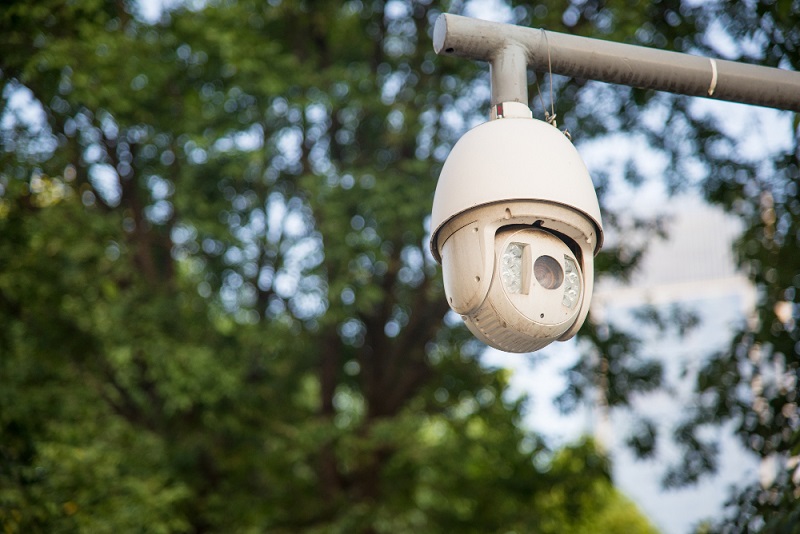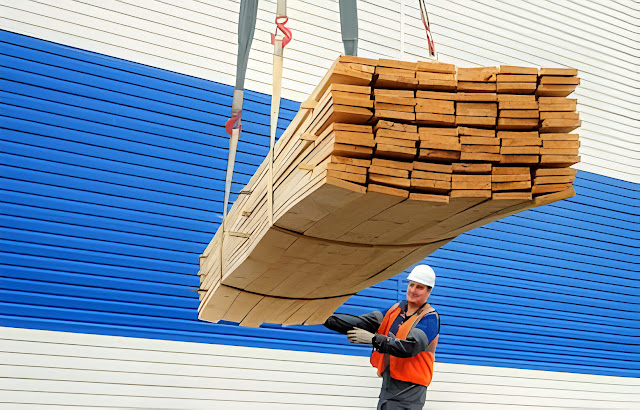Have you ever wondered if that gorgeous property you’ve been eyeing in Craigieburn is actually hiding a few unwelcome surprises? Are you curious about what goes on behind the scenes of a professional house inspection and why so many homebuyers insist on one? Buying a home is a monumental step, and ensuring your investment stands the test of time is key.
In this blog, we’ll explore the ins and outs of building and pest inspection in Craigieburn, covering what it entails and why it’s so important for both old and new properties. We’ll also look at common pests in Victoria, such as termites and rodents, and how a thorough inspection can highlight potential risks before you sign on the dotted line. By the end, you’ll have a clear picture of how building and pest inspections protect your financial interests, give you peace of mind, and help you make more informed decisions.
What’s more, we’ll discuss how a building inspector in Victoria operates, the regulations they must adhere to, and how to read the final building and pest report. We’ll even tackle questions people often ask, such as whether you can combine building and pest inspections into one service or if these checks are necessary for newly built homes. So, if you’re serious about safeguarding your Craigieburn property investment, keep reading. Let’s get stuck into how you can make the most of professional building & pest inspections.
Why Building and Pest Inspection Craigieburn Is Essential
Local Building Landscape in Craigieburn
Craigieburn is a thriving suburb on Melbourne’s northern edge, known for its rapidly growing residential developments and welcoming community atmosphere. However, the area’s growth can sometimes mean a varying standard of older homes, newer builds, and renovated properties. With this range of housing styles, it’s critical to conduct a thorough house inspection to ensure your potential purchase is structurally sound and free from hidden issues.
Not to mention, Craigieburn’s temperate climate can attract certain pests, especially termites, which thrive in warm conditions. Even if a property appears perfect at first glance, you won’t know for sure until a qualified building & pest inspector checks the foundations, walls, roofing, and every nook and cranny where unwanted critters might be lurking. This local knowledge is part of what makes inspection so important, as houses in this region may have specific vulnerabilities related to temperature swings and moisture levels.
On top of that, the building landscape in Craigieburn reflects Australia’s overall emphasis on strict building codes, but not every homeowner stays up to date on property maintenance. An inspector familiar with local conditions ensures that any red flags—whether structural or pest-related—are identified promptly. By investing in a building and pest inspection in Craigieburn, you’ll arm yourself with the insights you need to negotiate repairs or adjustments before finalising your deal.
Is a Building and Pest Inspection Always Necessary Here?
When scoping out properties in Craigieburn, you might wonder if a building and pest inspection is truly non-negotiable. After all, if the home looks brand new, why bother with additional checks? The short answer is that having a pest and building inspection is the only reliable way to confirm the internal condition of the structure. Even brand-new homes can have construction oversights—like improperly sealed roofs or drainage issues—that only a trained building inspector can spot.
Likewise, pests don’t discriminate between old and new properties. Termites, in particular, can swarm to fresh timber just as easily as they can damage older wood. What’s more, if you skip a professional inspection, you run the risk of facing expensive fixes and possibly decreased property value down the road. In short, a building and pest inspection can unearth problems you may not see with the naked eye and can save you from financial stress and regret later.
Whether you’re a first-time buyer or a seasoned homeowner, it’s vital to approach any property purchase with careful planning. Arranging a house inspection provides an added layer of security and clarity. It’s an investment in your future, making sure that you won’t be caught off guard by structural weaknesses, pest infestations, or anything else that could compromise your home’s longevity.
What to Expect from a Complete House Inspection
Key Areas Examined by a Building & Pest Inspector
When you book a thorough inspection, the building & pest inspector typically runs through several key areas:
- Foundations and structural supports.
- Walls, ceilings, and floors.
- Roofing, gutters, and downpipes.
- Ventilation, moisture intrusion, and drainage.
- Doors, windows, and any visible exterior faults.
These elements are assessed for integrity, compliance with Victorian regulations, and anything that points to underlying problems. The inspector will also look out for signs of termite damage or nesting spots, along with other indicators of pest activity. This is where a specialised pest inspection comes into play, as it goes hand in hand with the structural check.
Moreover, the inspector may use specialised tools such as moisture meters, thermal cameras, or borescopes to investigate areas that aren’t easily accessible. By combining the findings from both the building and pest assessments, the final building and pest report offers you a comprehensive overview of the property’s condition. It’s a vital step that can help you decide whether to move forward or negotiate any necessary repairs.
Common Pests in Victoria: Termites, Rodents, and More
Victoria’s climate makes it a hotspot for various pests that can wreak havoc on your home. Termites top the list of concerns due to their ability to silently eat through wooden structures, often causing severe damage before anyone realises they’re there. Next up are rodents, which can burrow into roof cavities or the subfloor, leading to damaged insulation, electrical wiring, and potential fires.
Additionally, ants, cockroaches, and spiders can also be an annoyance, though they’re usually easier to eradicate. A detailed pest and building inspection isn’t just about spotting these pests; it’s about understanding the conditions that attract them in the first place. Damp areas, unsealed gaps and timber that’s in contact with soil—these factors can act as invitations for pests to move in and get comfortable.
By having a professional check for signs of infestation, you can address issues early and prevent minor problems from ballooning into massive repairs. Plus, if you’re selling, a clear inspection report can make your property far more appealing to potential buyers.
How Long Does a Pest and Building Inspection Usually Take?
The time it takes to finish a house inspection in Craigieburn can vary based on the size and age of the property. In general, you can expect the process to take between one and three hours. Smaller apartments or newly built homes without a history of prior renovations may be quicker to assess. On the other hand, larger houses with expansive outdoor areas or multiple levels might require a more extensive review.
During this period, your building inspector will systematically move through each area of the house, using both observational skills and specialised equipment. As they look for signs of structural defects and pest intrusion, they’ll document their observations. If a potential red flag pops up, they may take extra time to investigate further, ensuring they fully understand the scope of the issue.
Ultimately, the length of the inspection is less important than thoroughness. A rushed job can easily miss critical details. By choosing a reputable business experienced with building and pest inspections in local Victorian areas, you’ll know you’re getting a meticulous and accurate assessment.
The Role of a Building Inspector Victoria
Qualifications and Licensing Requirements
In Victoria, building inspectors must meet strict standards to practise legally. They typically need relevant qualifications in construction or building surveying and often hold credentials from professional bodies. A seasoned building inspector Victoria also keeps up to date with changing regulations to deliver sound guidance on structural issues and pest-related matters.
Licensing requirements ensure that the inspector you hire possesses the appropriate knowledge and skills. This is crucial because an unlicensed or inexperienced inspector might miss crucial problems, leading to costly repairs or even legal disputes later. When researching potential inspectors, don’t hesitate to ask about their qualifications, industry memberships, and proven track record in the local market.
Licensing also gives you the comfort of knowing that your inspector is accountable to regulatory bodies in Victoria. This accountability means they must follow an established code of conduct and uphold best practices, further safeguarding your interests as a homebuyer or seller.
Victorian Regulations and Compliance Checks
Beyond detecting structural or pest-related issues, a building inspector Victoria also checks for compliance with state regulations. These rules cover matters like fire safety, local council permits, and compliance with Australian Standards. Failing to meet these requirements can be a huge headache if you decide to move forward with a purchase without a proper inspection.
In addition, building inspections in Victoria often include a review of documentation such as building permits, occupancy certificates, or any relevant renovation records. This paper trail helps the inspector determine whether all work done on the property has been carried out lawfully. If something looks amiss, they’ll alert you so you can clarify the situation with the seller.
As a buyer, staying informed about regulatory checks is a smart move. These checks confirm that big-ticket features—like structural alterations or additions—have been properly approved. Ultimately, this helps you avoid unexpected fines, forced modifications, or complications around selling the property in the future.
The Building and Pest Report Explained
What Does a Thorough Building Pest Report Include?
A building pest report typically outlines all findings from your inspection in a clear, systematic way. You can expect to see sections detailing the building’s overall condition, any significant defects found, and recommended actions for both current and potential issues. Moreover, the report should document pest-related discoveries, such as termite infestations, areas of wood rot, or signs of rodent activity.
Diagrams or photographs often complement the written portion, pinpointing exactly where trouble spots lie. Some reports assign severity levels to each issue, helping you prioritise what must be fixed immediately versus what could be handled down the track. This level of detail ensures you’re not left guessing about how severe a listed problem might be.
Beyond structure and pests, a strong building and pest report may include insights about drainage, ventilation, and even the property’s proximity to termite-prone areas. The more thorough the document, the easier it is for you to decide how to proceed—whether that means negotiating repairs, seeking specialised quotes, or walking away from the deal entirely.
Why Do Lenders Often Require a House and Pest Inspection?
If you’re taking out a mortgage, your lender may insist on a house and pest inspection for good reason. Banks and financial institutions want to protect their investment just as much as you do. A home with severe structural flaws or active pest infestations can lose value rapidly, leaving lenders exposed to unnecessary financial risk.
By asking for a building and pest report, lenders gain confidence that the property serves as a solid collateral for the loan. In some cases, if defects are uncovered but deemed manageable, lenders might require that these issues be rectified before approving the loan. While this can feel like an added hurdle, it often works in your favour by forcing transparency and helping you avoid property pitfalls.
Additionally, a professional inspection reassures lenders that you’re a responsible borrower who has done due diligence before finalising the purchase. Far from being a mere formality, this inspection step actually aligns the interests of everyone involved—you, the seller, and the bank—towards ensuring the property’s long-term stability.
Understanding Your Report: Red Flags vs. Manageable Issues
Reading through the final building and pest report can often feel intimidating, especially when it flags multiple issues. Not every item listed is equally serious, though. A broken roof tile might be a quick fix, while active termite damage could pose a far bigger threat. Pay attention to the terms used:
- Major defect – A significant problem requiring urgent attention.
- Minor defect – A smaller fault that may not have immediate consequences.
- Safety hazard – A risk that could harm occupants if left unaddressed.
These distinctions help you prioritise what needs fixing right away and what can be scheduled for later. If any red flags appear, you could negotiate a lower purchase price or nudge the seller to address certain repairs before settlement. This negotiation process is far easier (and more informed) when you have all the details laid out in front of you.
Ultimately, clarity is the report’s greatest benefit. By understanding which items are critical and which are merely cosmetic, you can allocate your resources wisely. You’ll have a plan of action and a realistic sense of what it will cost to keep your new property in top shape.
Buying a House? Why a Building Inspection Is a Must
The Importance of a Building & Pest Inspection for New Builds
It’s easy to assume that newly constructed homes have few problems. However, new builds aren’t immune to defects or poor workmanship. Even a small oversight during construction—like incorrect waterproofing in the bathroom—can turn into a costly nightmare down the line. A building & pest inspection on a new build ensures that the best possible construction methods have indeed been followed.
In addition to confirming structural integrity, the inspector also checks for pest vulnerabilities. New timber and fresh materials might look pristine, but they can still attract termites if the foundations or landscaping leave wood in contact with soil or damp areas. Early detection and prevention measures can spare you from a serious headache in the future.
By opting for a thorough inspection before final settlement, you gain leverage to ask the builder to rectify any issues. This is especially relevant when your new home is under a warranty period or subject to builder’s insurance. Addressing these items right away helps you settle in with confidence.
When Should You Arrange a Buying a House Building Inspection?
Ideally, you should organise a buying a house building inspection before you sign the final contract or during the cooling-off period. This timing allows you to act on your findings without being locked into the purchase. If the report highlights severe structural or pest-related problems, you have the option to renegotiate or potentially pull out altogether, depending on your contract’s terms.
In some cases, buyers order an inspection even earlier, like during the open-house stage, to get an initial idea of the property’s condition. While this can give you a head start, it’s often best to contact a professional once you have a serious interest and are ready to place an offer. That way, the report can be directly tied to your contract stipulations.
Regardless of the exact timing, notify the seller or agent that you plan to conduct a thorough building and pest inspection. This level of transparency helps all parties stay on the same page and prevents last-minute surprises. After all, being upfront fosters trust and might even speed up your negotiations for repairs or price adjustments.
When scouting for a building & pest inspector, take the time to read online reviews, check their affiliations, and ask for recommendations from friends. A sterling reputation in Victoria—especially one supported by multiple positive testimonials—often indicates a reliable, knowledgeable professional. This step may seem small, but it can make a vast difference in the accuracy of your final building pest report.
For additional assurance, look for inspectors who belong to industry associations, such as the Victorian Building Authority. Membership usually signals that they keep up with continuing professional development, which is vital in an ever-changing technical landscape. Having a local specialist also ensures they’re familiar with Craigieburn’s unique conditions, which could influence pest behaviour or structural requirements.
Finally, confirm that they hold valid insurance. Professional indemnity insurance is especially important. If the inspector overlooks a glaring issue, you’ll have some protection in place. Partnering with a well-established firm heightens the chance of receiving timely, accurate advice and a trustworthy house and pest inspection.
Frequently Asked Questions (People Also Ask)
Is a Pest Inspection Required by Law in Victoria?
In most scenarios, a pest inspection isn’t strictly mandated by law in Victoria. However, certain lenders or property contracts might make it effectively mandatory if you rely on mortgage financing. Moreover, building regulations do require homes to meet certain standards that often overlap with pest prevention, especially in high-risk zones for termite activity.
How Much Does a Building and Pest Inspection Craigieburn Cost?
The price varies depending on factors such as property size, building style, and the complexity of the inspection. Standard building and pest inspections for a three-bedroom home might start from a few hundred dollars but could rise if the property is larger or in poor condition. While it’s tempting to go for the cheapest service, remember that quality often correlates with expertise and thoroughness. Spending a bit more upfront can save thousands in potential repairs later.
Can I Combine Building and Pest Inspections into One Service?
Yes, many inspectors combine the two, providing an all-in-one pest and building inspection. This approach is both convenient and cost-effective since it only requires one site visit and one report. It’s a popular choice in Craigieburn, especially for buyers eager to streamline the process.
Are Building and Pest Inspections Necessary for a Newly Built Home?
Even newly constructed homes can have oversights. Skilled labour isn’t foolproof, and materials might not have been installed according to recommended guidelines. A building inspection verifies that the house meets all Victorian codes, while a pest inspection checks for termite protection and other vulnerabilities. If anything is amiss, you can address it at once while the builder’s warranty or insurance is still active.
Conclusion: Protecting Your Craigieburn Investment
Whether you're eyeing a fixer-upper or a modern new build, investing in a building and pest inspection in Craigieburn is far more than just a formality. It's a crucial step that protects you from hidden issues and costly repairs down the line. By carefully assessing the structural condition, uncovering pest infestations, and verifying compliance with Victorian building standards, you lay the groundwork for a secure and smart property investment.
Key Takeaways for a Successful House and Pest Inspection
- Hire a qualified building inspector Victoria. Their trained eye can detect subtle signs of damage or risk that might escape your notice.
- Understand your inspection report. Don't skim through it—identify red flags, evaluate repair costs, and use this information to negotiate better terms or request essential fixes.
- Inspect new homes too. Just because it’s newly built doesn’t mean it’s flawless. A professional inspection provides reassurance from day one.
Final Thoughts on Safeguarding Your Property
When buying a home, skipping a building and pest inspection in Craigieburn can cost you more than you think. A thorough inspection empowers you with knowledge, enabling smart financial decisions and long-term peace of mind. It’s a small investment that protects one of your biggest ones.
Start strong—book your building and pest inspection in Craigieburn today and move forward with confidence.










.jpg)






.jpg)







